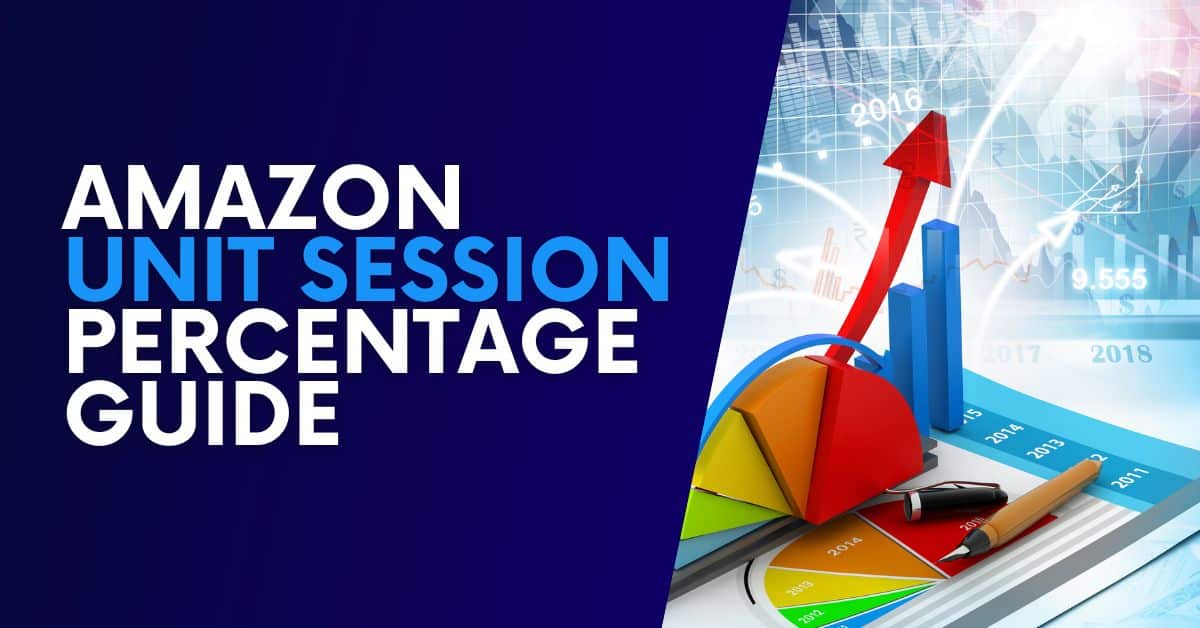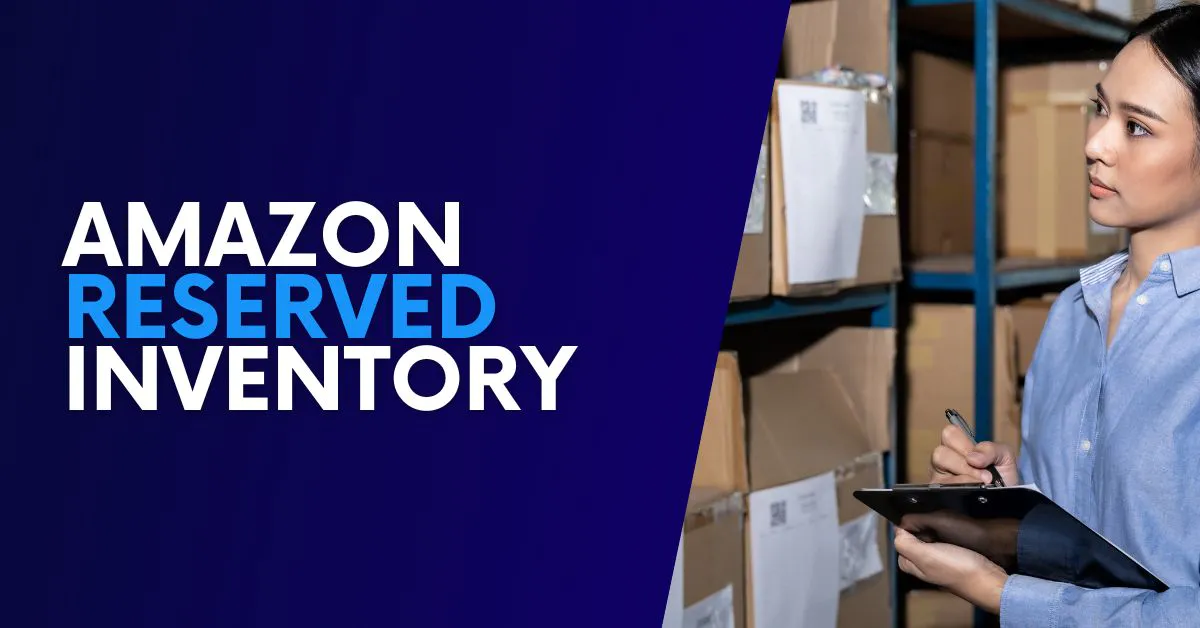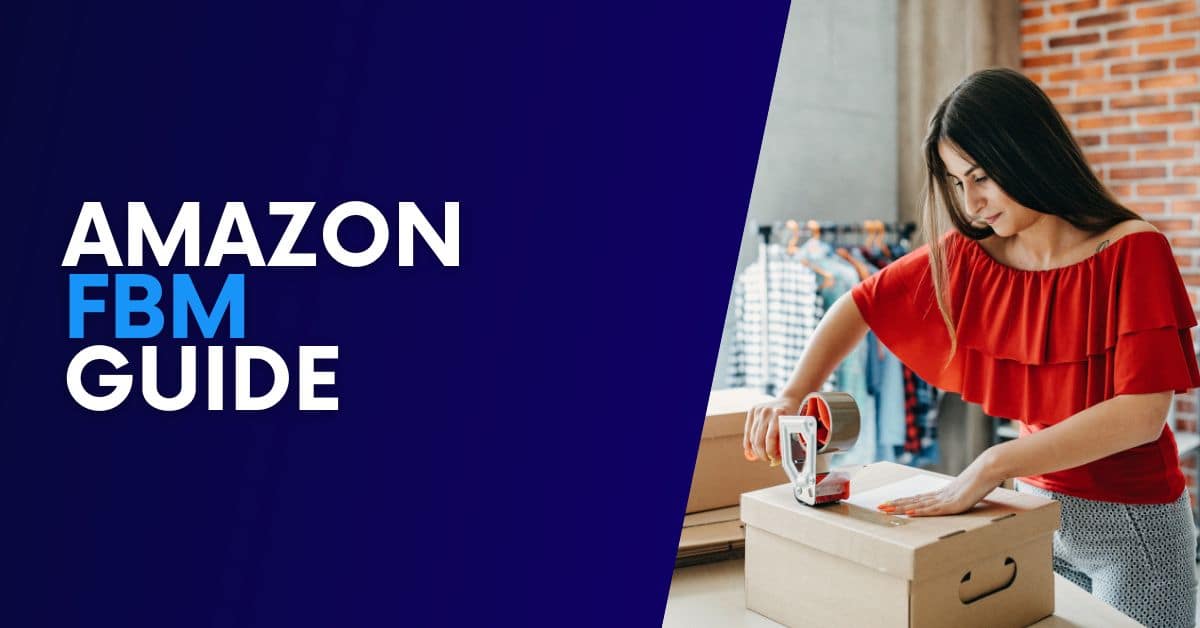Amazon SEO The COMPLETE Guide [EXAMPLES]
Amazon SEO The COMPLETE Guide [INFOGRAPHIC]
Amazon SEO (Amazon Search Engine Optimization) means optimizing your presence both on and off Amazon so that your product listings appear at the top of Amazon product searches.
You can significantly boost your Amazon SEO by driving OFF Amazon traffic onto Amazon with Amazon Influencers, Improving Your CTS (Click To Sale – Conversion Rates), Keyword Research, Amazon Listing Optimization, Improving Amazon Seller Metrics & more by focusing on the 25 Amazon SEO Factors below.
Appearing at the top of Amazon product searches with Amazon SEO increases sales, drives brand credibility & perceived value among other powerful long term benefits.
In over 10 years as a Fractional CMO, Amazon Consultant, and eCommerce Consultant, not to mention CEO, I’ve seen just about every mistake and the lessons from them. That means you get all the learnings without the scars.
Getting found in Amazon product searches is painstaking. If you’re an Amazon Seller Central seller, Amazon Vendor Central seller or selling Amazon B2B I’m sure you’d agree.
I’m going to help you get your listings to the top of Amazon search results by breaking down every Amazon SEO factor into simple, easy-to-understand, and take-action on sections.
I’ve also created a super easy-to-read Amazon SEO INFOGRAPHIC that I’ve placed at the end to help you.

What is Amazon SEO?
Amazon SEO (Amazon Search Engine Optimization) means optimizing your presence both on and off Amazon so that your product listings appear at the top of Amazon product searches.
If you’re interested in how to increase sales on Amazon this is the first place to start.
When a customer searches on Amazon, Amazon’s search algorithm (A10), evaluates the search to determine what products should show up like this:
- Keyword
- Relevancy
- Likelihood to purchase
Just like search result listings on Google, Amazon Product Search Results are not arbitrary, nor did they pay Amazon just to be at the top.
Unless of course, they’re advertisements.
Here is how to tell:
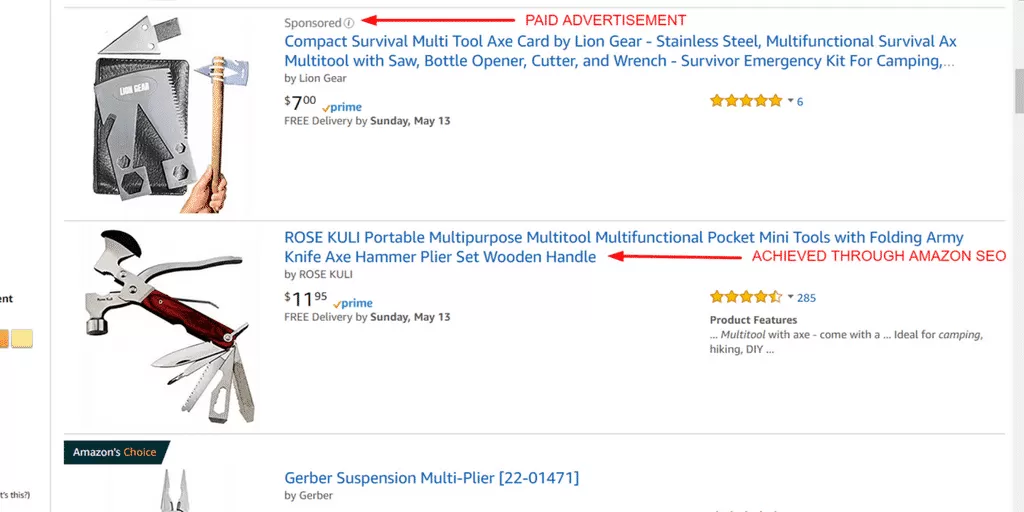
These are the top 2 search results on Amazon for “Camping MultiTool”.
The top result notes that it is sponsored.
That seller paid for a sponsored listing ad so that product would appear in the top results for that keyword as part of their Amazon Advertising Strategy.
The second result was achieved through Amazon SEO.
This is FREE advertising.
Let me explain…
Amazon’s logic, or algorithm, for what products it decides to have show up at the top of Amazon product search results is called A10 and ultimately boils down to asking this question;
“If I (Amazon) show this product to this customer, based on the search terms (Amazon Keywords) they typed in, will they click on the listing and buy the product?”
Amazon evaluates your seller account and product listing on a multitude of factors to predict if your listing will sell, if they think it will, then they will show it higher for search queries.
Want to decrease ACoS on Amazon? Focus heavily on getting sales from organic search results with Amazon Listing Optimization and Amazon SEO.
Here are a few items that the Amazon A10 Algorithm looks at to determine if the product will sell or not:
Some Metrics Considered By A10 For Amazon SEO:
- BSR (Best Seller Rank)
- Price
- CTS (Click To Sale)
- Your Product Listing Conversion Rates (how many people actually buy vs. how many people click on your listing)
- Relevancy (The Amazon Keywords on your listing & more)
- Amazon Reviews (quantity & quality)
- Retention (Seller Feedback, Defects, re-orders)
Unlike Google, who goes to great lengths to keep the ranking factors they use to decide who shows up at the top of their search results a secret, Amazon doesn’t subscribe to their same ideology.
They’ll flat out tell you some of their ranking factors. Just browse the Amazon Services Seller Education pages.
So how does the Amazon a10 algorithm work?

What is Amazon A10? (Amazon SEO Algorithm)
What is Amazon A10(A9)?
Amazon A10 is a colloquialism for A9, the logic that Amazon uses to decide what products to show for search and ads.
Similar to Google Rank Brain or any of the other names algorithm’s have been given, Amazon has put a name to the logic of how it determines how high a product will show up in its search results.
That name is Amazon A10.
They actually tell you themselves what they look at to decide how high your product will appear in Amazon product search results.
Here are some highlights.
Our work starts long before a customer types a query. We’ve been analyzing data, observing past traffic patterns, and indexing the text describing every product in our catalog before the customer has even decided to search. – Amazon
Remember when I was talking about BSR, Conversion Rates & more earlier?
So we focus on the words and the intent behind those words. – Amazon
In my experience as an Amazon Seller Consultant, in Amazon Keyword Research or even normal Google SEO Keyword Research, some keywords indicate you are doing research and want to know more about a product while others indicate you’ve already done your research and now you are looking for a product to BUY.
You’re after buyer intent. That’s the name of the game. Here is an example that I use with my Amazon Consulting clients.
Let’s say we search for “Womens Red Shoes”.
Lot’s of different kinds of red shoes. If you’re searching for something broad like this, you are trying to learn what kind of red shoes you want.
You are NOT in BUY mode.
Okay, so you’ve done your research, you’ve narrowed it down.
So now you go back into Amazon’s search field and type in:
“red women’s suede open toe pumps size 6”
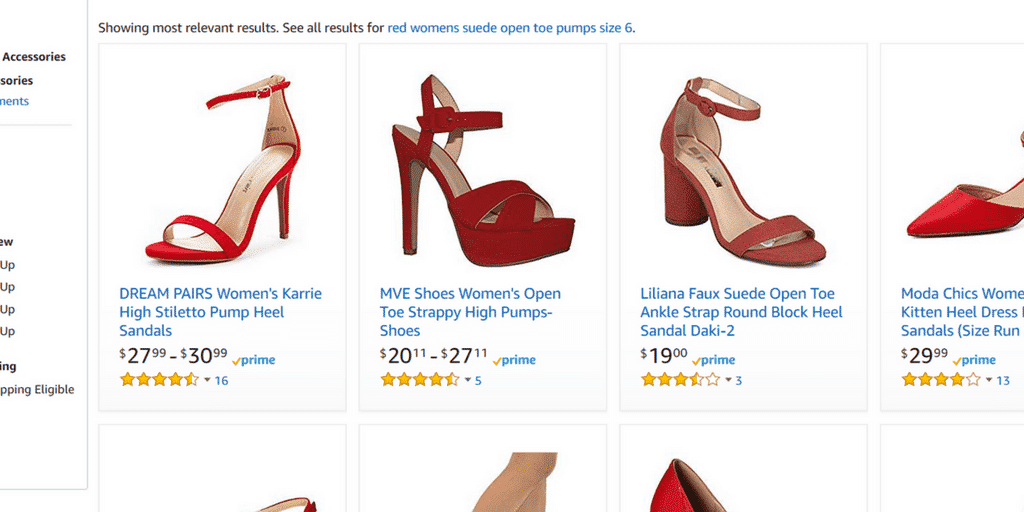
Do you see the Amazon Keywords?
This searcher has narrowed down that:
- They need or want the color red
- They need or want a women’s shoe
- They need or want them to be made out of suede
- They need or want an open toe
- They need or want pumps
- And they need or want Size 6
This is buyer intent. They’ve narrowed down everything they need and are searching for it exactly.
That’s what Amazon’s A10 Algorithm figures out and sorts it out to listings on Amazon.
Amazon SEO Tries To Identify Your Intent By Evaluating:
- What you need
- The likelihood if you’re going to buy it
You want to gear your listings on Amazon around buyer intent keywords. Follow?
Some more from Amazon:
One of A10’s tenets is that relevance is in the eye of the customer and we strive to get the best results for our users. Once we determine which items are good matches to the customer’s query, our ranking algorithms score them to present the most relevant results to the user.
Translation?
Amazon looks at what products have produced sales for which Amazon Keywords and then show those higher because we treat relevancy different than Google does. Relevancy = Sales.
The primary objective of Amazon is RPC (Revenue Per Customer) and the best way to achieve this is making the products you are most likely to buy the most visible.
So, what are the most important things to know about Amazon A10?
Amazon A10 Focuses On:
- Relevancy: Your ability to create connective tissue between the customers’ search and your product. This includes front and back-end keywords as well as other on and off Amazon factors.
- Conversions: Your ability to convert a customer significantly impacts your ability to be found on Amazon.
- OFF-Amazon Traffic: Your ability to send customers from off of Amazon onto Amazon for your products in particular plays a major role in how visible you are ON Amazon.
- Catalog Velocity: If you have a bunch of products listed in your catalog that are not selling and not moving, consider removing them as Amazon wants to see a strong distribution of sales velocity across your products that you choose to sell on Amazon.
- Click-Through Rate: Your ability to get customers to click on your product impacts how visible you are in search and ads.
- Seller Rating and Seller Metrics: In Amazon A10, your seller rating and health metrics drive how visible your products are on Amazon.
- External Traffic: Your ability to send customers from referral sources OFF Amazon onto Amazon to your product listings.
- Impressions: Your ability as a brand to get impressions on your products impacts how visible they will be in Amazon searches and Amazon ads. It is your goal to get as many eyes on your product via Amazon SEO, Amazon Ads and OFF Amazon Traffic as failure to do so results in low visibility on Amazon.
So as you can see Amazon SEO is driven by Amazon Listing Optimization
Straightforward right?
Well, there is a lot more to it.

How Does Amazon SEO Work?
When it comes to On-Amazon factors that you have control over, Amazon Search Engine Optimization boils down to 3 simple factors.
Amazon SEO Factors:
- Product Listing Factors
- Seller Account Factors
- External Traffic

19 Product Listing Amazon SEO Factors
1) Amazon BSR (Amazon Best Seller Rank)
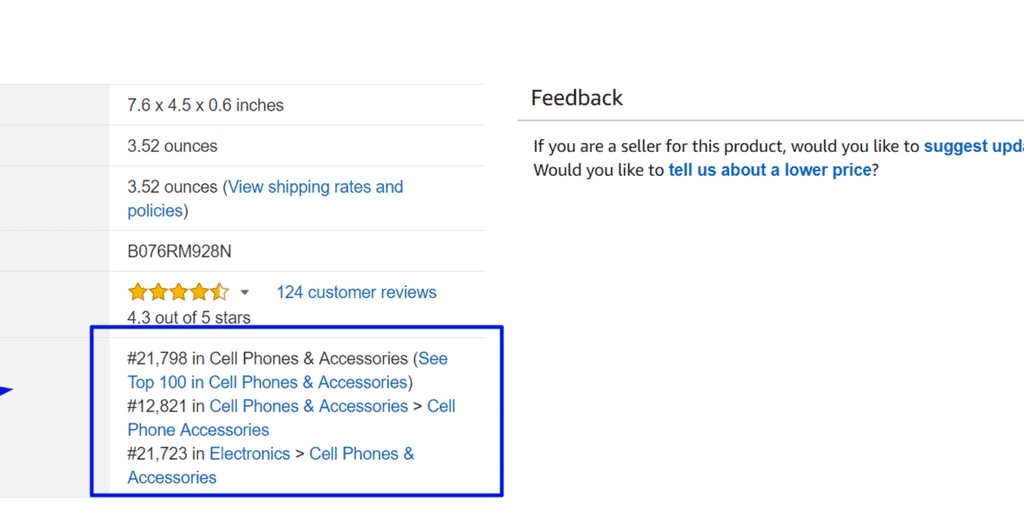
Amazon BSR is your products’ sales rank on Amazon out of the total number of products in your category.
In short, it measures your sales velocity on Amazon compared to competitors and other products you may be measuring. You typically want to measure this metric over time vs. a competing product.
You’ve heard that old adage “it takes money to make money” yeah?
Well, as far as Amazon SEO goes, it takes sales to make sales.
Remember I mentioned CTS earlier?
Click To Sale is your conversion rate on Amazon. How many people are clicking on your listing and actually buying instead of leaving your listing or even worse, existing Amazon all together?
The more you improve your listing CTS (conversion rates), the better your Amazon BSR will be.
This is like a golf score, you want a lower number here. The better your BSR is, the higher your Amazon Product Listings will appear in search results.
2) Amazon Keywords
Okay, this first piece is important to understand. There is no extra benefit to repeating keywords throughout your listings on Amazon.
Back in the day in SEO, this used to be called keyword stuffing. In other words, repeating your keywords over and over in hopes that you appear higher in the search results.
Amazon SEO Keywords Best Practices:
- Select a set of Amazon keywords that are buyer intent keywords.
- Don’t repeat the same keywords over and over.
- Use a broad array of Amazon keywords.
- Use them in the Search Terms section of the back end of your listings on Amazon.
- Use them in the title.
- Use them in the bullet points.
- Use them in the long description.
Only repeat the Amazon keywords if it makes contextual sense in the product copy.
Okay, so we know we NEED keywords but how do we get them?
Well, there are lots of tools out there that will let you know what people are searching for on Amazon.
I recommend and use Merchant Words.
The idea behind tools like this is that they can tell you what people are searching for on Amazon when they want to buy your product.
Amazon SEO Keyword Research PRO Tip:
You can use Amazon itself for FREE to identify what people are looking for.
Here’s how:
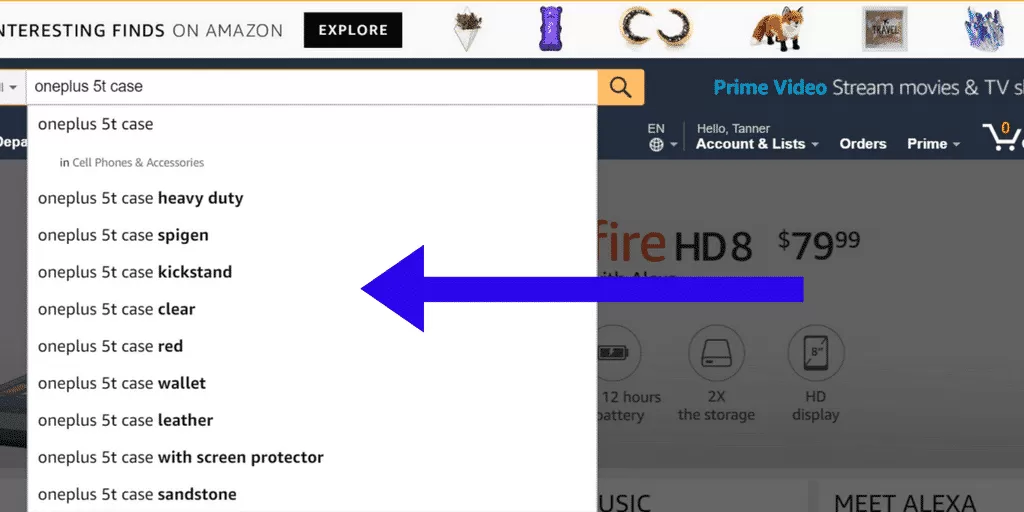
How To Use Amazon Search Suggestions For Amazon SEO Keyword Research:
- Go to the Amazon Search Field
- Start Entering an Amazon Keyword or Your Product
- Look at the Drop Down List
See those keywords? Amazon is telling you what people frequently search for to buy your product. Those are a great start in terms of selecting Amazon Keywords for Amazon Listing Optimization of your listings on Amazon.
3) Amazon Features and Bullet Points
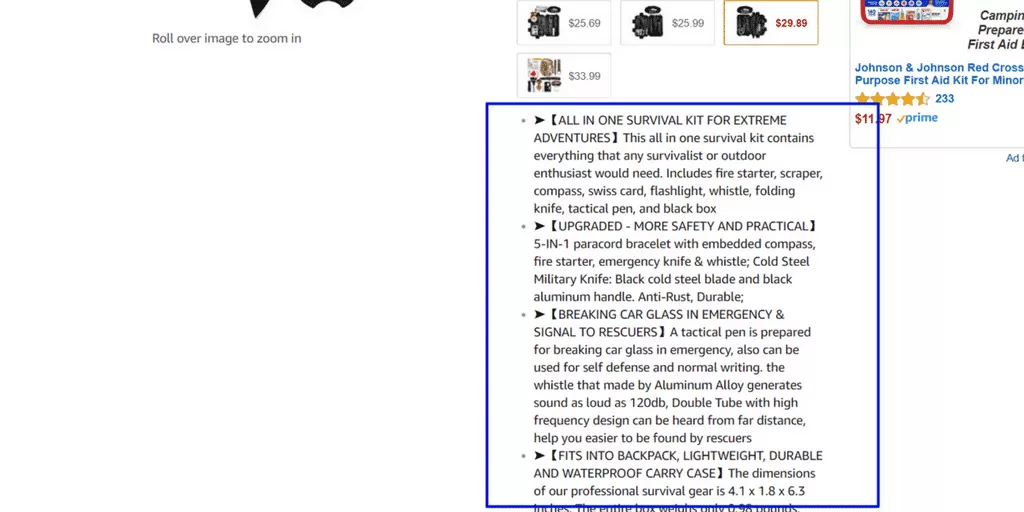
This is the bullet points section of your listings on Amazon.
See what’s going on here?
The Features / Bullet Points feature a lot of keywords related to the product, specific things the product has/does /includes and also SPEAKS to who it is for.
These product features/bullet points are also written in the vernacular, or terminology of how their customer would talk.
If you want to learn more about Amazon Bullet Points, check out: How To Write Amazon Bullet Points
4) Amazon Product Description
For Amazon SEO, your product description is really where the rubber meets the road.
This is where you want to make sure you are thorough and really stick to the elements of a great product description, just like in all of eCommerce.
Here is what they are:
Amazon SEO Friendly Product Description Best Practices:
- Benefit heavy, focusing on benefits over features.
- Written how your target customer would normally talk
- Skimmable
- Captions, bullets, numbered lists
- Includes Images
- Technical specifications
- Answers questions
- Features
Again, there is no benefit to keyword stuffing in your listings on Amazon. As long as your Amazon keywords are in there at least once, you are in a good place for Amazon SEO.
Plus, keyword stuffing reduces conversions as it isn’t fluid and doesn’t sound like a human wrote it.
But it doesn’t stop here…
5) Brand and Manufacturer Part Number
There is a lot of benefit in putting your manufacturer part number and the brand name of your product in your title.
Here is what I am talking about:
If you take away nothing else from writing effective Amazon Product Title’s for Amazon SEO, understand that placing your Brand in the product title is incredibly important and is a MUST DO.
Why To Add Your Brand In Your Product Title For Amazon SEO:
- Your product will be eligible for Amazon brand search filters
- People search for specific brands on Amazon
- You are telling Amazon what brand your product is
Registering your brand through Amazon Brand Registry will help improve your Amazon SEO through the brand prioritization and additional tools it affords to brand registered sellers.
As for manufacturer part number, depending on your niche this could be incredibly important.
Let’s say you are selling car parts or parts. People often read the part number off a manual or instructions and then search for that specifically.
This goes for a lot of industries and you want to broadcast this in the product title rather than burying it in your listing.
6) Specifications
Remember earlier when we were searching for a red shoe? This is where you specify the important details that separate your product from others such as color, size, upc, weight, part numbers, etc.
Let’s have a look at the specifications for a top ranking welder.
Notice how every key detail is filled in?
This is where attention to detail and filling out every field really pays off.
I’ll tell you, a lot of manufacturers have a data organization problem meaning, they don’t have data feeds, or spreadsheets on the ready with all of this information for all of their products.
See the problem with that?
That means, when it comes to getting found, whether it be Amazon, Google or other marketplaces & sales channels they are at a disadvantage.
7) Categories, Browse & Leaf Nodes
Now, getting as specific as possible with your category and sub-category on Amazon really makes a difference for Amazon SEO.
See how specific this welder gets with its product categories?
8) Amazon Search Terms
Did you know that there is a section on the back end of an Amazon listing where you can specify what search terms you want to be found for?
Well, there is. There are 5 boxes that allow 50 characters where you can enter the Amazon Keywords you choose based on your Amazon Keyword Research.
In actuality, you should use it like it were one long 250 character text entry box.
Remember earlier when we were talking about keyword stuffing = bad? Well, here it is GOOD, so enter as many Amazon keywords as will fit! It’s great for your Amazon SEO.
Amazon Categories & Sub-Categories are routed to Browse Nodes, Amazons’ internal classification of categories.
From there, they are routed to Amazon Leaf Nodes.
What are Amazon Leaf Nodes?
Amazon Leaf Nodes are internal references to product categories and sub-categories that only Amazon Seller Support can see.
When you first create a product on Amazon using their Seller Central User Interface or an Inventory Flat File, you select the categories and sub-categories that your products belong in.
Once you’ve selected your Categories and Sub-Categories, your products are supposed to get assigned to the corresponding Browser Nodes.
Then, from the Browser Nodes, your products are assigned to more specific Leaf Nodes.
Things like keywords are understood and routed through Amazons’ search algorithm by their connection to Leaf Nodes.
If you are having trouble ranking for keywords or not getting impressions on ads that you are trying to run on specific keywords, you will want to check in with Seller Support to verify your product is assigned to the correct Leaf Nodes or any Leaf Nodes at all.
How Do You Know If You Have Leaf Nodes/The Correct Leaf Nodes?
Ever since the development of the Amazon SAS Core, Amazons’ paid tier of Seller Support, Amazon Sellers have started learning about their IDQ score, which is Amazons’ internal metric which you cannot see in Seller Central that essentially amounts to Listing Completeness.
Leaf Nodes are part of this IDQ score.
SAS Core representatives have been distributing a defective ASIN report that again, is not available in regular Seller Central and on the report, they will specify if your product has been added to Leaf Nodes or not.
What this has revealed is, many times, just because you select the correct product categories and sub-categories, it doesn’t mean that Amazon will connect your product to the corresponding Leaf Nodes, which is critical for Amazon Listing Optimization.
9) Amazon Source Keyword
This is really cool.
Did you know?
One of the factors Amazon determines on whether to rank your product vs. another product is Click Through Rate (just like Google!) and how well it converts (turns into a sale) for a given Amazon keyword.
In other words, this sequence of events happens:
- You go to Amazon and type in OnePlus 5T Case.
- You click on a case for your smartphone that you like.
- You buy that product.
You have just told Amazon to rank that particular product higher for OnePlus 5T Case.
Here’s how:
See this?
https://www.amazon.com/s/ref=nb_sb_noss_2?url=search-alias%3Daps&field-keywords=oneplus+5t+case
That’s the URL for the search example I just gave you.
Take that one step farther and click on a product:
Amazon’s Choice (really great for Amazon SEO) is this product:
https://www.amazon.com/Oneplus-KuGi-Resistant-Flexible-smartphone/dp/B076RM928N/ref=sr_1_3?s=wireless&ie=UTF8&qid=1526313124&sr=1-3&keywords=oneplus+5t+case
See that?!
At the end of the URL are the keywords!
So wait, are you saying I should give out THAT link?
No, that could be seen as intent to game the system which violates Amazon’s terms of service.
I’m saying Amazon keeps track of what product listings convert for what keywords people enter into the Amazon search bar.
Do you want to know the best link you can give out?
The root URL.
See how that stops at the ASIN? That’s the link you want to give as it is the link to the root or main listing for your product listings on Amazon without modifiers.
You mentioned people clicking on my listing for certain keywords,
Is that important and how do I get them to do that?
10) Amazon Click Through Rate (CTR)
For people to buy your products, they need to click through to your listings on Amazon.
The number of people that see your listing vs. the number of people that actually click through is your Amazon CTR, click-through rate.
So how can we make people click on our Amazon product listing?
11) Amazon Product Titles
Let’s have a look at one of the top listings for the search term “Inflatable Air Mattress”
Here is what we are looking at:
We can deduce they are trying to appear for:
- Queen Size Luxury Raised Mattress
- Best Inflatable Airbed With Built-In Pump
- Elevated Raised Air Mattress Quilt Top
Amazon Conversion Rate Optimization Tip:
They are doing a great job of Amazon Listing Optimization by reducing buyer risk right out front in the product title by citing their 1-year guarantee. Good on them!
You want to make sure the product titles of your listings on Amazon have these attributes or qualities:
Amazon SEO Product Title Best Practices:
- Appealing
- Descriptive
- Include a Brand Name
- Include Manufacturer Part Numbers & Model Numbers as Necessary
- Benefit Driven
- Include The Amazon Keywords
12) Amazon Reviews
92% of consumers read online reviews.
You not only are after a high star rating but also the number of reviews.
It’s nigh impossible to get Amazon SEO results without strong Amazon Reviews.
Need help with this? I wrote an article called: How To Get Reviews on Amazon that takes a deep dive into how to get Amazon reviews with some highlights including the Amazon Request a Review Button.
Okay, now we have people on our listing. How do we sell to them?
The name of the game is to drive revenue for Amazon and they will reward you with visibility.
Once you have someone on your Amazon Product Listing, here are the factors that turn them into paying customers.
13) Amazon Product Images & Amazon Product Videos
There are a few components to successful Amazon product images but the thing to know for Amazon SEO is the magic number is 6.
Also, a few other items of note:
Amazon SEO Product Image Best Practices:
- Images need to have an all-white background
- Images need to be square and as for dimensions: 1,000 pixels wide by 1,000 pixels tall (1,000 x 1,000) in order to be zoomable.
- Details matter and zooming in to see how something connects or the type of material used do make a difference.
- If you can provide 3d product views that will significantly increase conversion rates
- If you can provide videos that will also significantly increase conversion rates
Let’s look at that smartphone case example from earlier:
Their images illustrate the value, benefits & features of the product you are considering to buy.
They show the product flexing, they show the durability, they show the size, it describes the item and how it enhances & improves your experience with your OnePlus 5T.
Which behavioral economics tricks are going on here?
- They are answering questions about the product in the imagery
- They are objection handling in the product imagery
- They are giving a frame of reference in the imagery
- They are illustrating what the product looks like & feels like in the real world in use so you can picture yourself using it, therefore one step closer to a purchasing decision
You want your image to:
- Illustrate what your product is, does and who it is for in about 1 seconds time
- Illustrate the value or benefit your product gives
- Have a white background
That being said, did you know you can pack EVEN MORE imagery into product listings by being Brand Registered on Amazon?
Brands that are a part of the Amazon Brand Registry have access to powerful selling tools that non-brand registered brands do not, such as:
- Amazon A+ Content
- Amazon Product Listing Video
- Amazon Storefronts
These are immensely powerful conversion tools and as we know, the better your product listings convert, the better your Amazon product search rankings will be.
14) Product Listing Completeness
This part isn’t hard to wrap your head around. As you’re going through and creating your product listings on Amazon, complete as many sections as possible.
The more you have filled out, the better Amazon Listing Optimization you have.
Think of it this way, the more data you enter, the easier time Amazon has at figuring out who to show your product to.
15) Amazon Product Price
There is no way around this. The Amazon A10 algorithm keeps tabs on what products convert at what price and understands that people are shopping for good deals.
When browsing the first page of Amazon search results for any given Amazon keyword, you will notice some have great reviews, some have lots of reviews, some have higher prices and some have lower.
The idea is finding a mix of great reviews, lots of reviews and a low price. That’s the golden ticket.
Don’t meet all 3 criteria? Well, a drastically low price while you build your reviews will help you rank higher.
It will also help you get that buy box.
16) Amazon Parent-Child Products
Earlier in this article, I mentioned that scattered data in eCommerce is a bad thing. This is a way that Amazon deals with that.
Let’s look at the example of the phone case:
These are child products. The different colors of the case are not separate products all together with a different ASIN, rather they are child products of the parent product.
The idea here is that your different options are all listed on the same Amazon product listing for the benefit of:
Parent Child Variation Best Practices For Amazon SEO:
- Accruing all of your reviews in one place.
- Keeping product data clean.
- Letting Amazon know this is all the same product.
- Letting customers know this is all the same product, just different colors.
17) Time on Page
Just as with Google, Amazon evaluates the time someone spends on your product listing and equates it to value and likelihood to buy.
So, time on Page is just that, how long a customer spends on a page before buying or bouncing (leaving – coming up in 18).
So what’s the idea? 2 things.
Time on Page For Amazon SEO:
- You want the customer to stay on your listing and consume the content of your listing while evaluating to make a purchase. In other words, stay on your listing.
- Do not leave your listing. Buy.
18) Bounce Rate
Bounce Rate is when someone visits your product listing and then leaves through one method or another. They could visit another product listing through an ad on your product listing, they could go back to the search bar and look for another product or something else; but the bottom line is, they leave.
Someone visiting your listing, not taking an action and leaving is a bad thing and negatively impacts your search visibility on Amazon.
19) Questions & Answers
Don’t ignore these…
Amazon wants to make sure you are supporting your product and they evaluate questions and answers as part of their A10 algorithm in deciding on how high to show your product listing. So if you want your product to appear higher in Amazon product relate searches, then answer those questions!
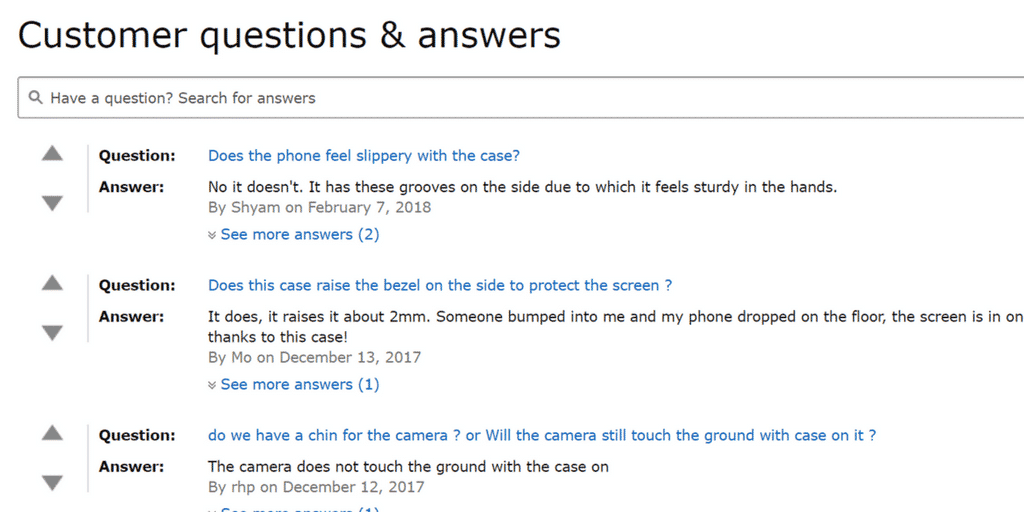
Amazon SEO Pro Tip:
You can mine your sales copy from your customers’ questions.

6 Seller Account Amazon SEO Factors
As far as Amazon SEO goes, Amazon isn’t going to rank products high from sellers that do not deliver on their promise to customers.
If you don’t want to constantly deal with Amazon Seller Support on issues, then you’ll want to focus heavily on these next items.
20) Amazon Seller Feedback
Did you know Amazon has more ratings other than simply product review ratings?
Seller feedback is crucial to your Amazon SEO because it is crucial to Amazon’s customer retention rate and revenue per customer.
Have a look:

Now, this isn’t as straightforward as you would think.
We aren’t talking about winning the buy box here.
We’re talking Amazon SEO, so we’re looking at Negative Seller Feedback Rates. In other words, all negative feedback your seller account receives.
If you are a Vendor Central Seller, this will not be relevant here as Amazon purchases the inventory from you, stores it at their warehouses and fulfills to customers. They are the seller.
If you are a Seller Central Seller and selling via Amazon FBA or FBA Small and Light (Fulfillment By Amazon), you are in good shape as Seller Feedback on Prime eligible items is generally more favorable than Manufacturer Fulfillment as the customer is getting free 2-day shipping.
If you’re interested, I go more in-depth on Amazon FBA here: How Does Amazon FBA Work?
21) Order Processing Speed
If you’re a vendor central customer and you see those PO’s come in, you want to make them a priority.
Seller central customer? Then you want to prioritize fast shipping and handle orders efficiently.
Amazon makes a direct correlation between this and customer satisfaction, therefore, you should make a direct correlation between it and your Amazon search rankings.
22) In-Stock Rate
Pretty straightforward right? If you’re always out of stock or low on stock where the customer risks not getting their order, Amazon will not show you prominently to their customers.
Don’t risk this. Keep your stock levels proper.
23) Amazon Perfect Order Percentage (POP)
Amazon Perfect Order Percentage or Amazon POP is this in a nutshell:
Amazon Perfect Order Percentage Looks Like This:
- Customer clicks add to cart and checks out.
- A customer receives your product promptly.
- The product is EXACTLY what they order, not defective, no issues.
- The customer keeps the product and does not return it.
This is your POP or otherwise known as a flawless victory.
Amazon SEO Pro Tip To Improve Amazon POP:
You can improve your Amazon POP by reducing buyer remorse with great packaging, inserts that explain what to do if a product isn’t exactly what they thought, and even tutorials or guides on how to best use your product as sometimes it is just a misunderstanding.
24) Amazon Order Defect Rate
Amazon ODR or Order Defect Rate takes into account these things:
Amazon Order Defect Rate Factors:
- A to Z Guarantee Claims
- Shipment Problems
- Order Defects
- Credit Card Chargebacks
Staying on top of your customer service pays dividends in Amazon SEO.
But what if your listing is so bad they exit Amazon.com all together?
25) Amazon Exit Rate
Earlier we talked about Bounce Rate and leaving a listing. This is hitting eject on the whole thing and leaving Amazon.com entirely. That’s not good.
Just with any platform, the time on platform and engagement on the platform are a BIG DEAL.
It’s one thing in the customer’s journey to open up another tab in chrome and have a look at your company website, social media & such while browsing your Amazon listing. That is called a healthy and normal customer journey. Your off Amazon factors influencing Amazon success.
BUT
Being so dissatisfied that they leave Amazon all together is not ideal and they measure this by your Amazon Exit Rate.
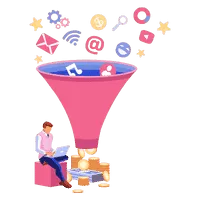
External Traffic
It’s no secret that Amazon prioritizes brands that send traffic from OFF Amazon onto Amazon to buy their products.
With the a10 algorithm, they’ve made it clear.
In other words, when you drive external traffic to Amazon product listings it impacts how high your products rank in Amazon SEO.
What’s more, a shocking fact that most Amazon sellers may not know is:
Most Amazon Sales don’t originate on Amazon.
In other words:
- Customer visits Amazon’s website and types in a keyword.
- Customer clicks on an ad or organic search result.
- Customer buys the product.
That’s NOT where most of the sales for products that are selling well happen.
If you run most best-selling products on Amazon through a tool like Sellzone, you will see most of their sales originate off Amazon as referrals from blogs, YouTube & more.
Take a look…
Have a look at the difference in impressions between Referral Traffic and Amazon.
That’s a difference of about 357 million impressions.
In other words, this K Cup brand is generating 363.2 million impressions each month just from their External Traffic sending sales to them on Amazon vs. only 6 million on Amazon.
So, with that in mind, how can you send External Traffic to your product listings to boost Amazon SEO?
1) Amazon Influencers
Amazon Influencers have been driving External Traffic to products on Amazon ever since 1996 with the launch of the Amazon Associates Program.
Amazon Influencer Marketing is a powerful source of sales and Amazon SEO for brands selling on Amazon.
You can find Amazon Influencers on all the popular channels:
- YouTube
- Blogs
- TikTok
- Twitch
- & more.
Amazon Influencers will produce everything from popular social media content to Blog Posts and YouTube Videos like: “Top 10 Kitchen Gadgets You Must Have”.
If you need help finding Amazon Influencers, popular tools like Referazon help you quickly find Amazon Influencers and easily manage campaigns.
2) PPC Advertising
It has always been considered minimum viable effort on Amazon to send PPC traffic from popular advertising networks like:
This is because it works and it helps with Amazon SEO.
Plus, with Amazon Display Advertising and retargeting an option in Amazon Advertising Console, using this in conjunction with Display Advertising produces very powerful results.
3) Email List
Your email list is a very powerful External Traffic source for Amazon SEO.
Some of the most popular campaigns to drive traffic to Amazon are:
- Distributing Coupon Codes
- Sale Announcements
- Promo Announcements
- New Product Launches
- & more
Speaking of product launches, when you launch products on Amazon, you will want to drive External Traffic to your listings from day 1.
Why?
Because Amazon has a honeymoon period where they evaluate what you’re capable of, which dictates how visible you will be in Amazon SEO and even Amazon PPC advertising.
This is how it works…

Amazon Product Launch Honeymoon Period
Have you ever said: “Let’s just get the product up and we’ll worry about optimizing it and marketing it later.”?
Well, did you know that is costing you Amazon SEO and money in PPC performance?
It’s true.
When you launch a product on Amazon, just like in brick and mortar, they want to see that you’re able to drive sales and traffic.
There are many terms for this period, but most Amazon Sellers call it the honeymoon period when you launch a product.
If you place a product on Amazon and do not promote it or optimize it will be difficult to gain rankings in Amazon SEO or impressions in Amazon PPC later on until you can prove you can move the product and get traffic.
So, what is your goal when you launch a product on Amazon?
- Optimize the product listing from day 1.
- Run Amazon PPC ads from day 1.
- Drive External Traffic from your email list from day 1.
- Drive External Traffic from Amazon Influencers from day 1.
- Drive External Traffic from Social & Google PPC ads from day 1.
The clock is ticking when you launch on Amazon and you want to move products as fast as you can.
Speaking of optimizing your Amazon listing from day 1, that starts with keywords.
Here’s how to optimize your keywords on Amazon for Amazon SEO…

How To Use Amazon Keywords (Step By Step With Screenshots)
As a consultant for Amazon I can tell you that this is how to use Amazon keywords to show up at the top of Amazon search results.
There are a few things to know before we begin the step-by-step guide:
How Amazon Keywords Work:
- Repeating keywords doesn’t help
- A keyword only needs to appear once to be indexed for it
- This goes for anywhere on your listing, front end or back end
- Place your most important keywords at the front of your Title, then Bullet Points, then A+ Content, then Search Terms & Subject Matter
- Name all of your A+ Content Images with keywords
1) Run Your Top Competitors Through A Keyword Tool To Identify The Keywords Sending Them Sales
Identify your top 3 competitors.
Then, run their listings through tools that tell you EXACTLY what keywords are driving customers to their listings and also what they’re running ads on.
I recommend Helium 10.
This is what you do:

- Grab one of your main competitors ASIN’s.
- Head to Cerebro inside of Helium 10.
- Enter the ASIN
- Click “Get Keywords”
Repeat this step for the top 3 competitors that show up at the top of Amazon search results.
2) Create Your List of Amazon Keywords To Use
Now, create a giant list of keywords from those CSV files.
You’ll have something like this:
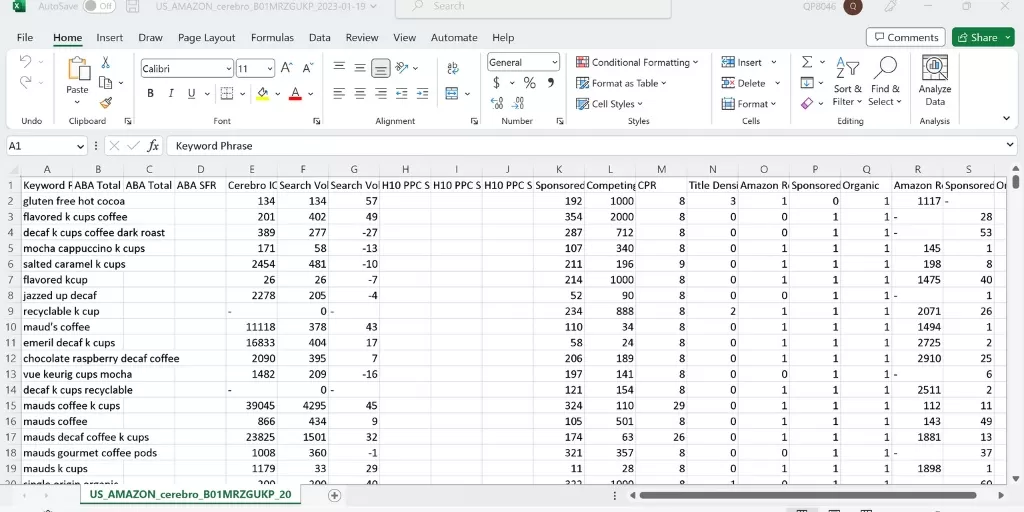
Go through the list and bucket your keywords into Buyer Intent and Brand Awareness.
It will look something like this:
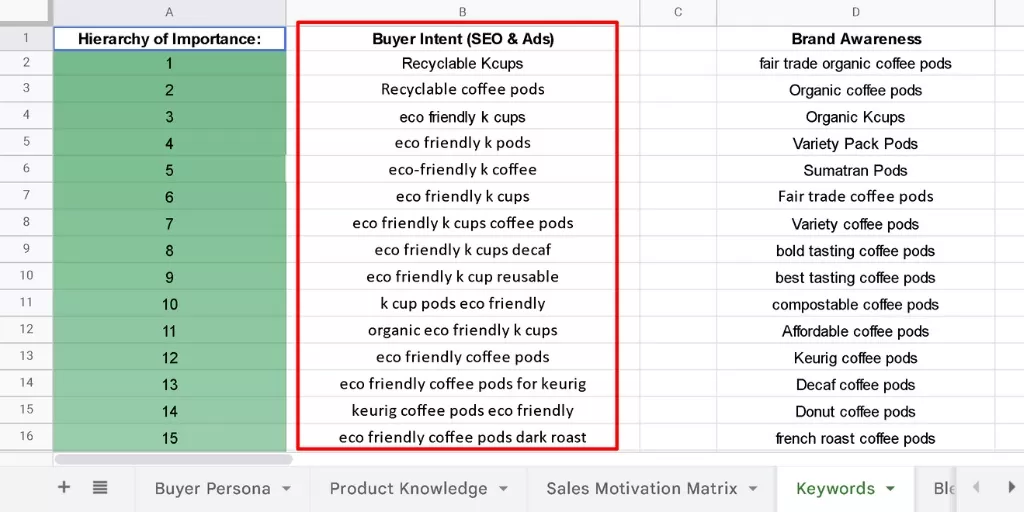
This is where most Amazon Sellers get it wrong.
Most sellers strictly go after the most searched terms.
This is a critical mistake.
One of the strongest ranking factors is your Unit Session Percentage (Conversion Rate).
That means, for your Amazon SEO, you want to go after customers who have already done the research and are typing in keywords that indicate they want EXACTLY what you’re selling.
Even if the keyword search volume isn’t as low.
This is because they are more likely to convert which will increase Amazon SEO.
So, take the Buyer Intent Keywords and place them in one column.
For the other, general, broader keywords that typically have a larger search volume, bucket those into Brand Awareness.
You’ll have other strategies to get in front of the Brand Awareness, large volume keywords, but you want your Amazon SEO Strategy to be tightly focused on Buyer Intent Keywords.
Your Buyer Intent keywords
3) Remove Duplicates and Narrow Your Keywords Down To 500 Characters
You’re not just removing duplicate phrases, but words.
To enter keywords on the back end of Amazon, you’re looking to trim things down to 500 characters.
250 characters for Search Terms
+
250 characters for Subject Matter
This is how you do it for free:
- Use this free tool from Trace My IP.
- Paste in your list from your CSV
- Click Original Order
- Copy your string of keywords
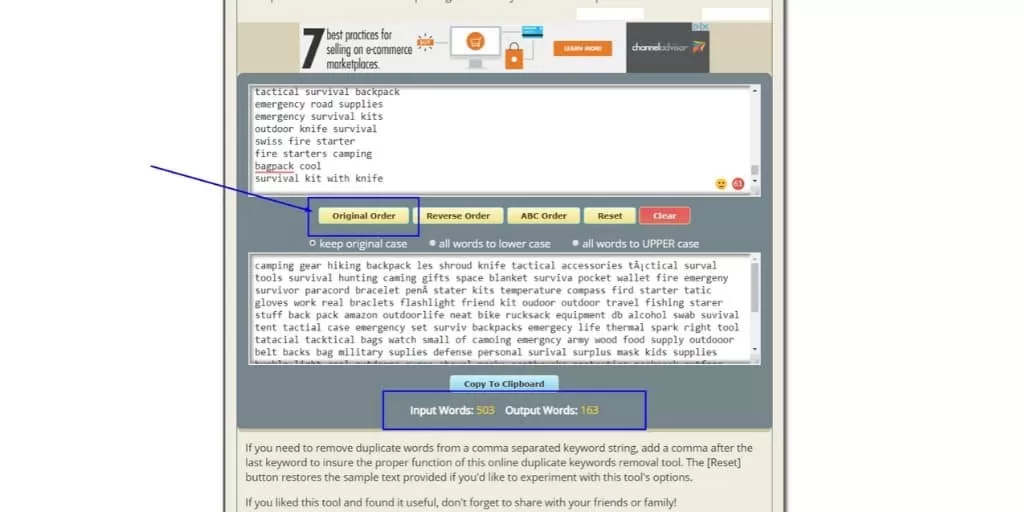
Now it’s time to trim them down even further.
- Head to Lettercounter.com
- Paste in your string from Trace My Ip
- Start trimming until you’re down to 500 characters.
You’ll have something like this:
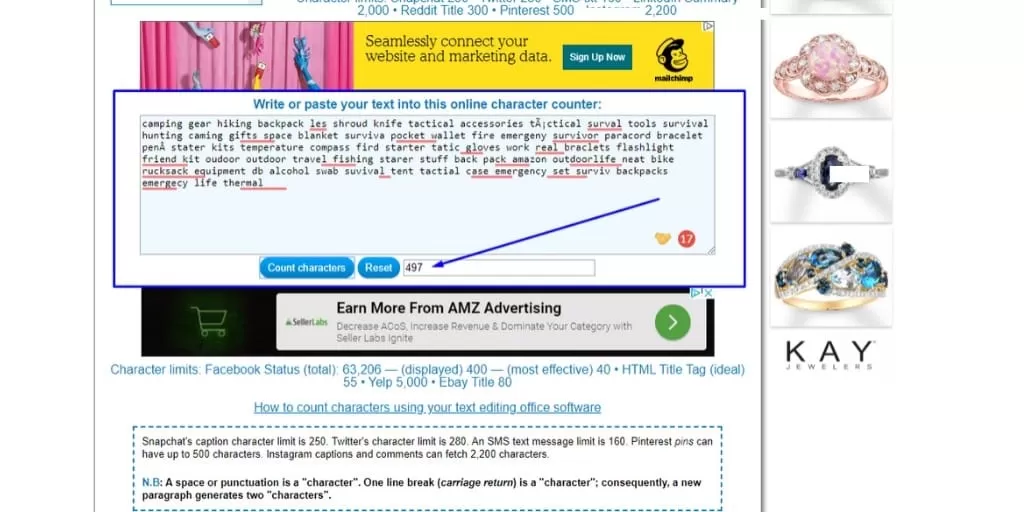
Now you’re ready to start entering keywords on the back end of Amazon in Subject Matter and Search Terms.
This is how you do it even easier with Helium 10:
1. Open up Helium 10 and go to the Frankenstein tool.
2. Paste in your list of Buyer Intent Keywords.
It will look like this:
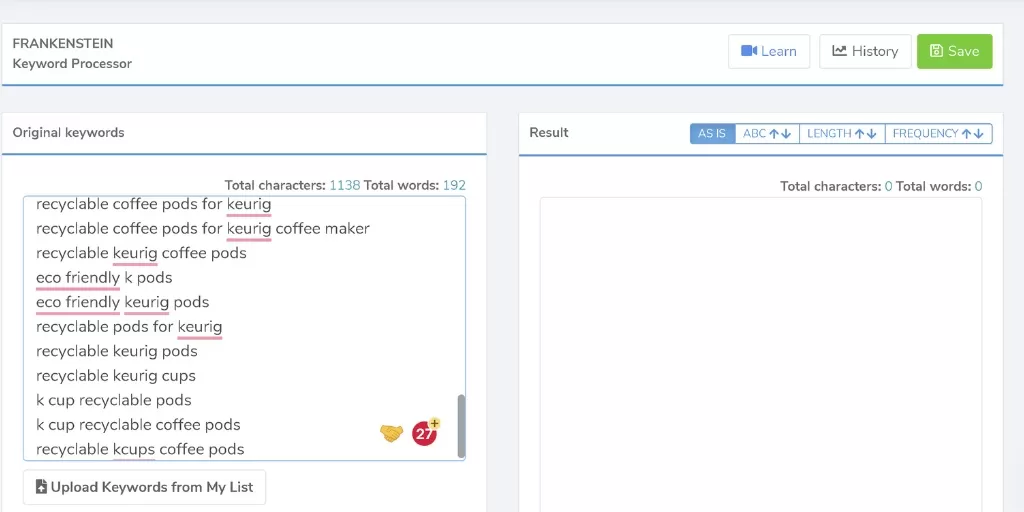
3. Leave the settings as they are, scroll down and click Process like this:
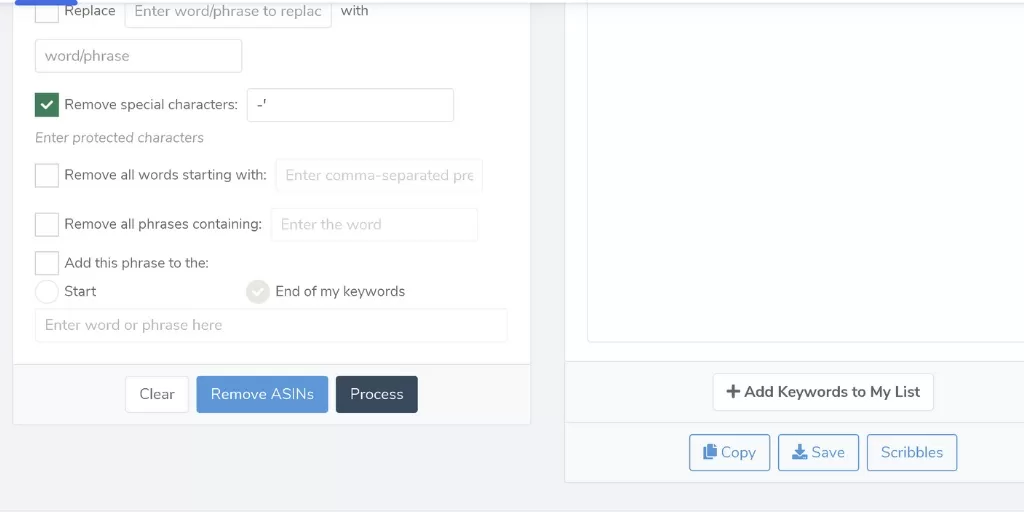
4. It will automate the process described above and you will notice there are far fewer words, like this:
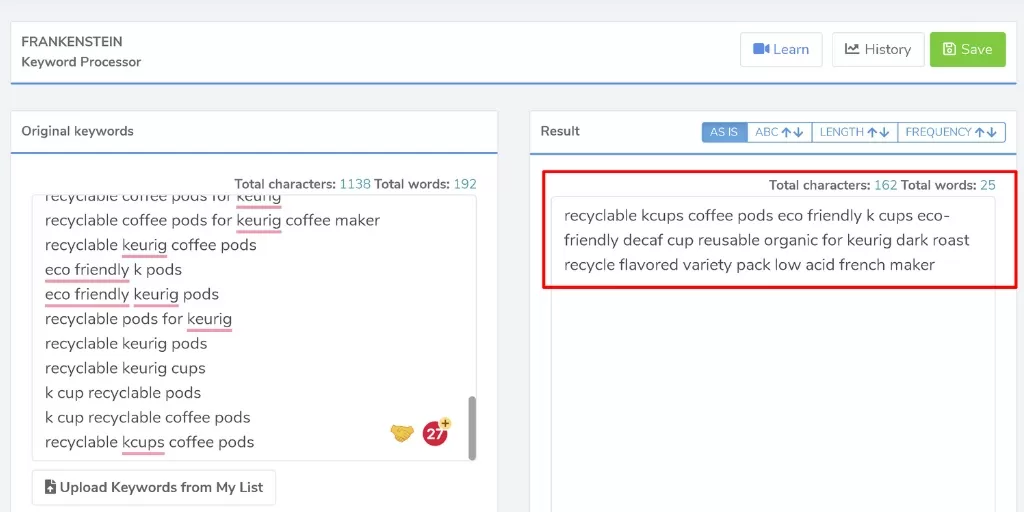
5. Simply click Save and you’re all set to proceed to the next step.
Or, you can use the Listing Builder tool in Helium 10 to optimize your listing for Amazon SEO and push it live right from inside the tool.
You can SAVE 10% OFF your monthy subscription of Helium 10 with code: SA10
4) Enter Your Keywords Into Search Terms and Subject Matter In Seller Central or Vendor Central
This is what’s important to know about how to use Amazon keywords in the back end of Amazon.
How Amazon Keywords Work In The Back End of Amazon:
- Amazon Platinum Keywords don’t count for you if you’re not a Platinum Seller
- Don’t bother with them
- You get 250 characters to use in Search Terms
- You also get 250 characters to use in Subject Matter
- Subject Matter is broken into 5 inputs that accept 50 characters each
- This is a total of 500 characters you get to use
- Use spaces to separate keywords
- Do not use commas ,
- Don’t use misspellings
- Don’t use other brand names that are not your own
- Don’t worry about plural vs singular
This is what you are going to do:
- Edit your product in Seller Central Manage My Inventory
- Head to the Keywords tab
- Scroll down to Subject Matter and click the Add More button underneath the field.
- Repeat this until you have 5 fields available to you
- Paste in your keywords, 50 characters at a time to each line until you’ve filled up the 5 lines of 250 characters
- Next, enter the remaining 250 characters into Search Terms
- Save, you’re all set!
You will have something like this:
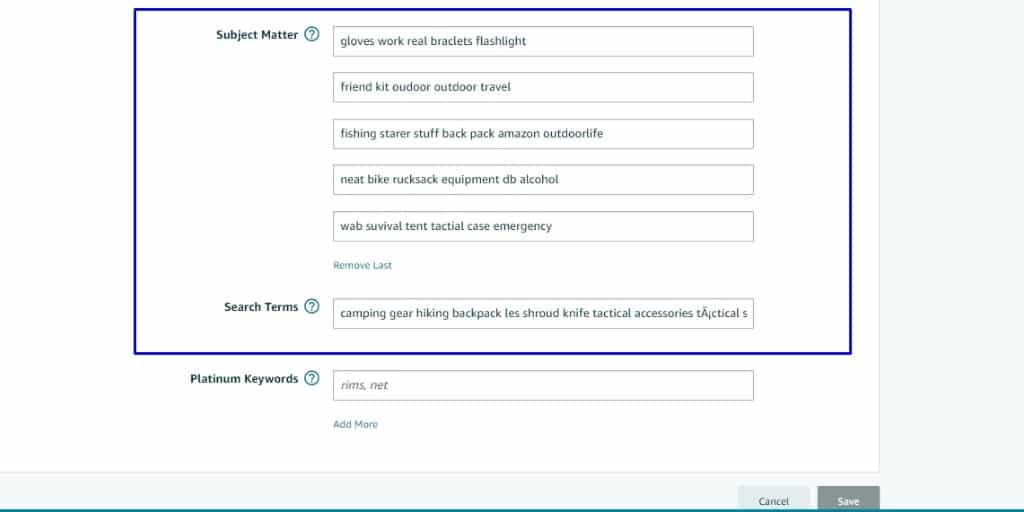
After you’ve saved, give it 15 minutes or so and then you can check to see if you’re indexed yet for the keywords.
How?
Here’s how…
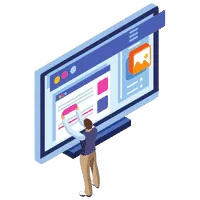
How To Check If Your Indexed For Your Amazon SEO Keywords
Now that you’ve entered in all of those keywords, you’re going to want to make sure you’re indexed for your Amazon SEO Keywords.
This is how to do it:
- Head to the Amazon Marketplace (the front end of Amazon)
- Make sure your category drop-down selection is all.
- Enter in your ASIN then a space and then your keyword you want to check (EXAMPLE: B07Q7T6VC3 survival)
- Hit enter
If you’re indexed, you will see an Amazon search results page with just your product.
It will look like this:

If you don’t see it right away, give it another 15 minutes or so.
Indexing isn’t like it is on Google.
You’re indexed within minutes on Amazon.
If you still don’t see it after then, verify you’ve completed the steps on how to use Amazon keywords correctly.
Or, Amazon does not believe you are relevant for the keywords you are targeting and it will take some time to make yourself relevant.
This is done through a combination of tactics that we’ve talked about in this article such as:
- OFF Amazon Traffic
- Building a Buzz off of Amazon
- The 19 Product Listing Account Factors
- The 6 Seller Account Factors
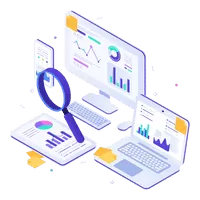
How to Increase Keyword Rankings on Amazon
Apart from following the 19 Amazon SEO Product Listing Ranking Factors and the 6 Amazon SEO Seller Account Ranking Factors, this is how to increase keyword rankings on amazon.
If you’ve followed everything listed above and still aren’t ranking, this is the section for you.
Follow these steps to increase your keyword rankings on Amazon:
1) Increase Your Unit Session Percentage
Unit Session Percentage is Amazons’ term for conversion rate.
Amazon will rank products that convert well.
After you’ve optimized your listing, focus ONLY on buyer intent traffic and a lot of it.
Don’t worry about brand awareness for now.
Send a lot of external traffic to Amazon that’s ready to convert to boost your unit session percentage.
If you aren’t ranking and don’t have many reviews and perhaps your price isn’t the most competitive, you don’t want to try to stand shoulder-to-shoulder with superior product offers in Amazon product search results.
The higher you boost your Unit Session Percentage for a keyword, the higher you will rank for it.
2) Google Ads For Buyer Intent Keywords
You probably already knew that Amazon knows what keyword someone comes onto Amazon from to view your product.
But, did you know, you can increase your keyword rankings on Amazon with external Google PPC traffic.
Here’s how it works:
- Create Google Ads for the keywords you want to rank for on Amazon.
- Drive traffic to your Amazon listings.
- Convert
You will notice your ON Amazon keyword rankings improve.
3) Exact Phrase Usage In Title, Bullet Points & A+ Content
You can increase your keyword rankings on Amazon by focusing on a classic copywriting technique.
Ask it, See it, Convert.
Increase your keyword rankings on Amazon by using the exact phrase of the keyword you want to rank for in your:
- Product Title
- Bullet Points
- A+ Content
- Alt Text (Image Keywords)
4) Broad, Exact & Phrase Match Amazon PPC Ads
If you want to increase your keyword rankings on Amazon, you need to prove you can convert on them.
Here’s how to do it:
- Set up a sponsored product listing or sponsored video campaign.
- Set up 3 ad groups, one with your desired keywords with Broad Match, one with Phrase Match, one with Exact Match targeting.
- In the Broad Match and Phrase Match ad groups be sure to aggressively use negative keywords not to damage your overall Unit Session Percentage with bad traffic.
Again, the goal here is not to go after ultra-competitive sweeping keywords where your product loosely fits, you want to boost your Unit Session Percentage by focusing on buyer intent keywords to increase your keyword rankings on Amazon.
Onto the frequently asked questions…

Frequently Asked Questions
By the way, marketing in Amazon & eCommerce is complex, with lots of challenges that cost you time & money.
If you want to sell more and spend less, I’m a top-rated Fractional CMO, Amazon Consultant & eCommerce Consultant with 10+ years of Fractional CMO Services, Amazon Consulting & eCommerce Consulting experience, and come with a proven, one-of-a-kind system to drive sales.
Whether it’s consulting Amazon brands, working with great companies at my Fractional CMO Agency or helping grow eCommerce website sales at my eCommerce Consultancy I can help you sell more & spend less.
Get a quick free consultation.



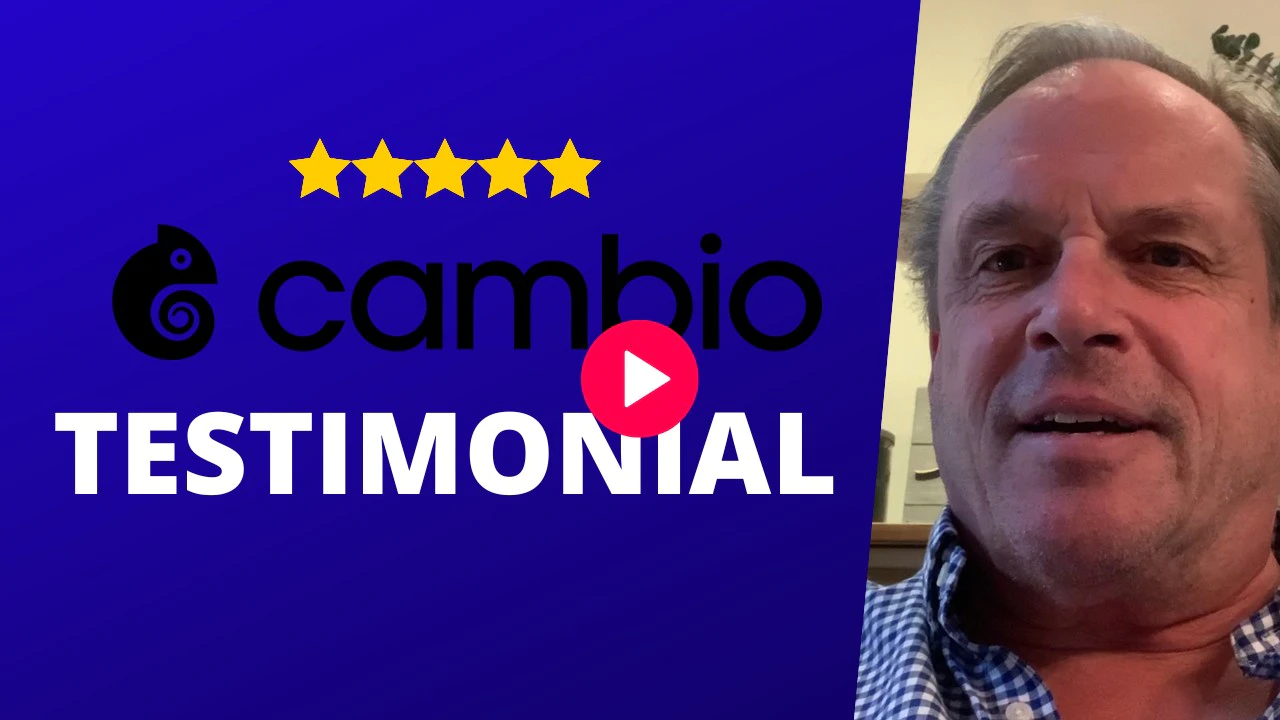
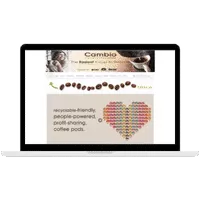

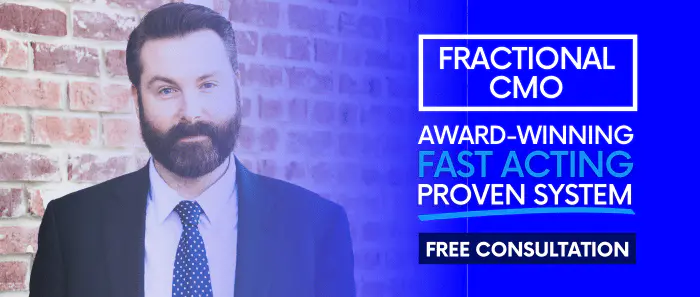


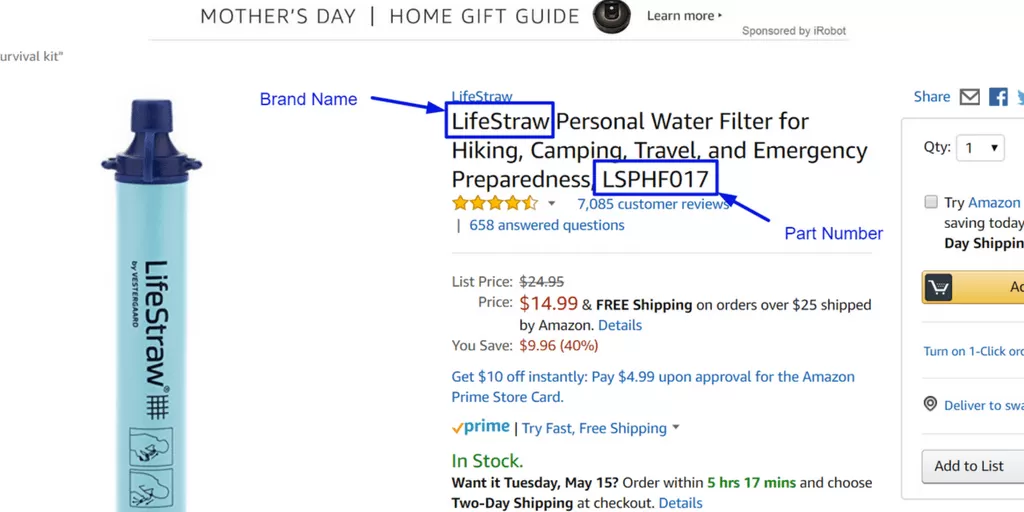
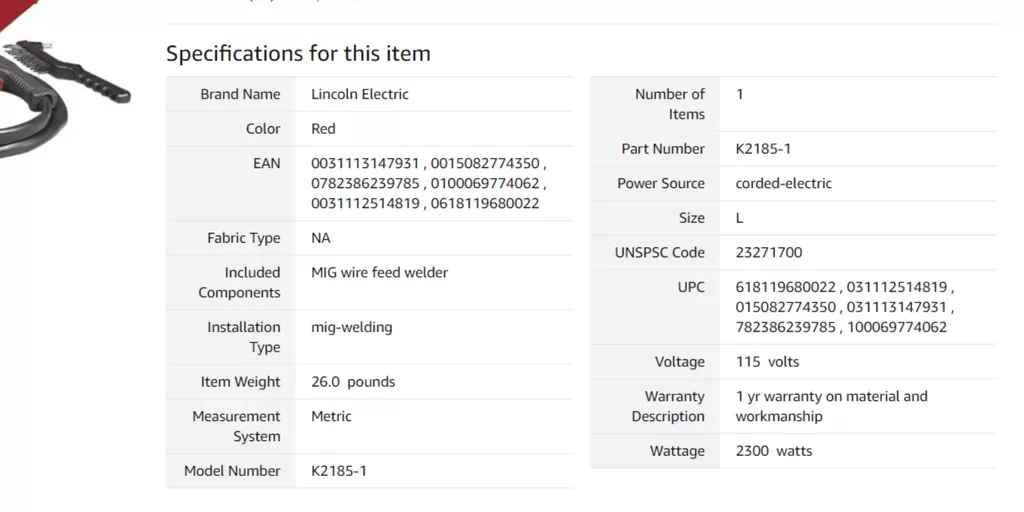

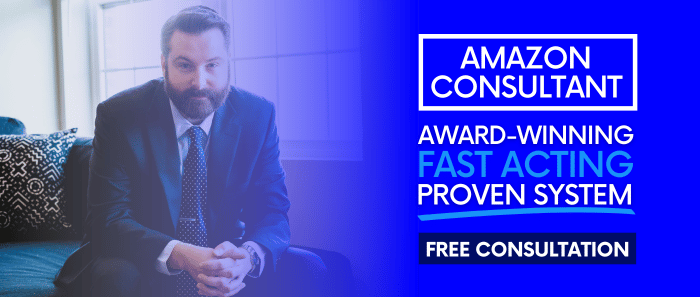

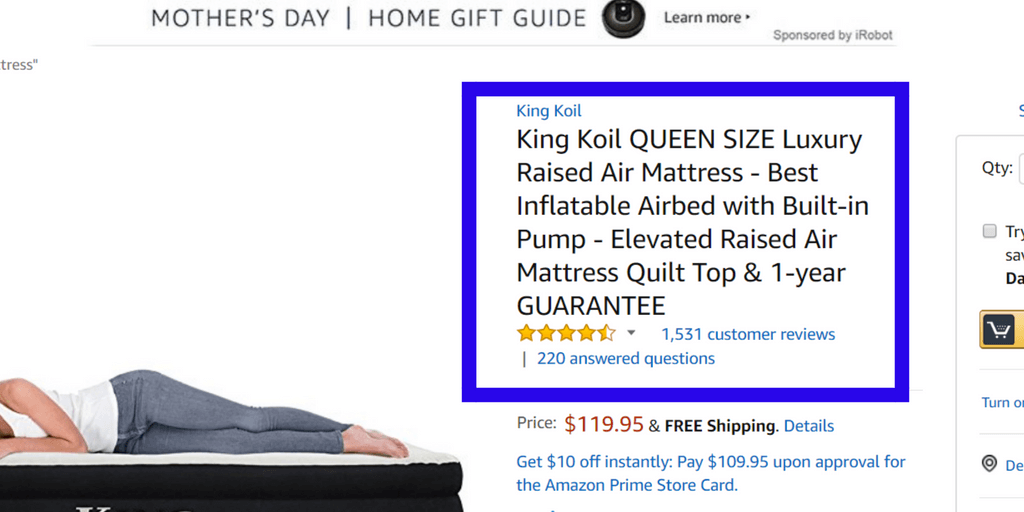
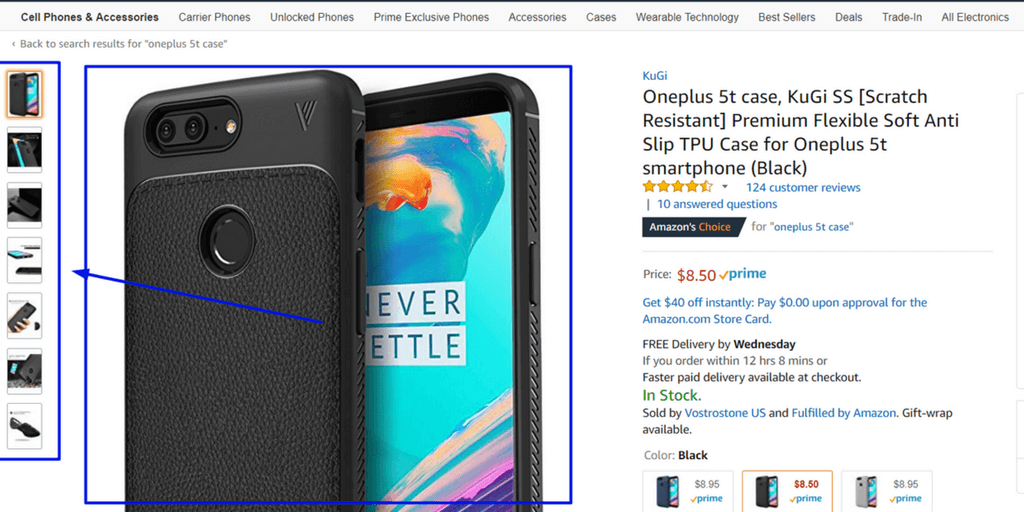
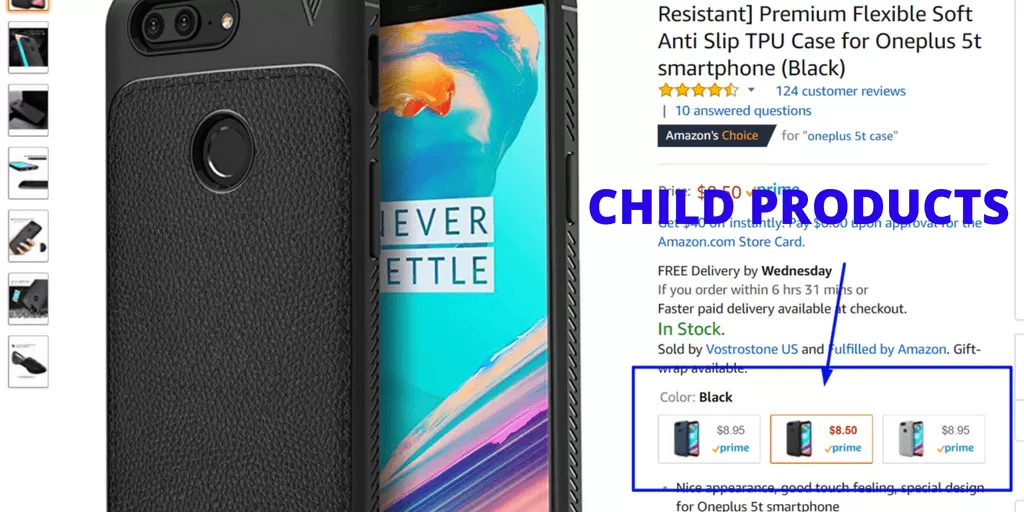

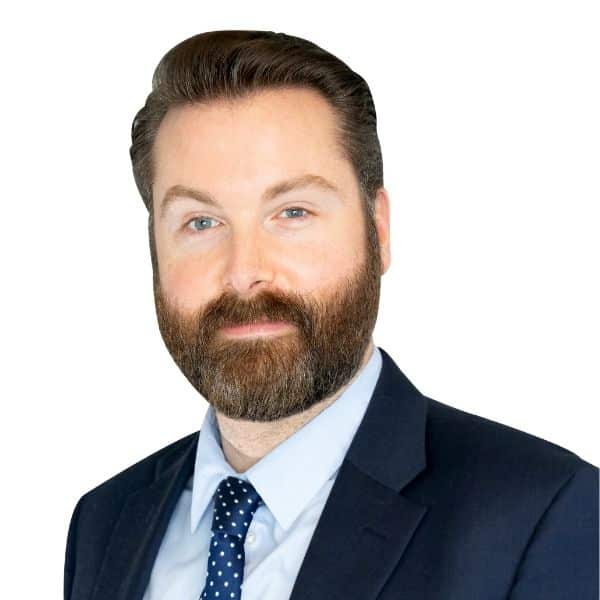

![How to Switch From FBA to FBM [Step By Step]](https://www.sourceapproach.com/wp-content/uploads/2024/08/How-to-Switch-From-FBA-to-FBM-The-Source-Approach-Amazon-Consultant-eCommerce-Consultant-Fractional-CMO.jpg)
![Amazon Posts EVERYTHING You Need To Know [EXAMPLES]](https://www.sourceapproach.com/wp-content/uploads/2024/08/Amazon-Posts-Everything-You-Need-To-Know-The-Source-Approach-Amazon-Consultant-eCommerce-Consultant-Fractional-CMO.jpg)
